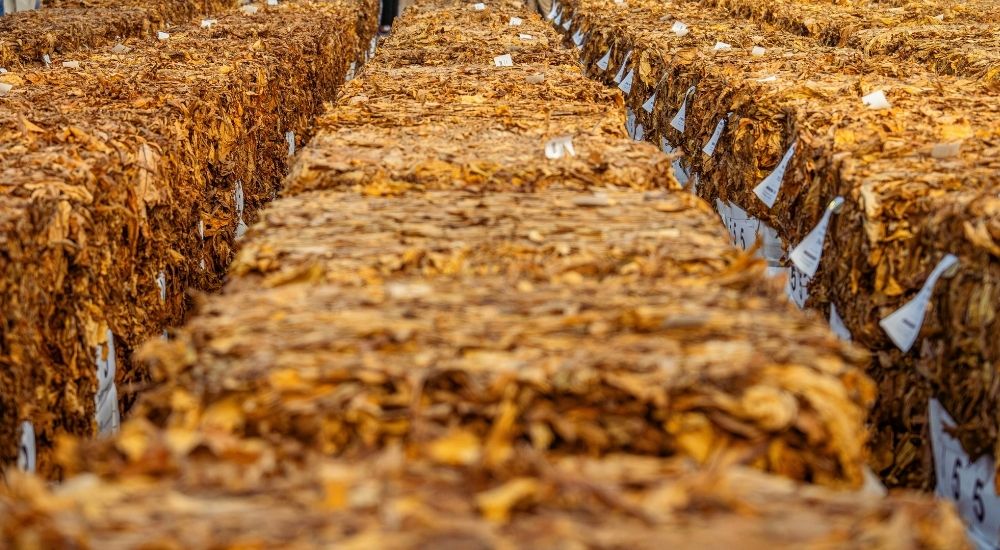
Tobacco is one of the most sensitive agricultural products, and its storage process plays a vital role in determining the flavor, aroma, and overall smoking experience. Whether destined for premium cigarette brands, cigars, or other tobacco products, the way tobacco is stored can either preserve its natural qualities or lead to significant deterioration.
In this article, we will explore in detail how tobacco is stored, the challenges manufacturers face, the role of modern machinery, and why proper storage is essential for maintaining tobacco freshness and quality.
Tobacco leaves are highly absorbent and sensitive to changes in temperature, humidity, and air circulation. Poor storage can cause:
For cigarette manufacturers and tobacco processors, storage is not just about keeping tobacco safe — it directly affects the quality of the final product and customer satisfaction.
If you are looking into tobacco production equipment, you can also check our dedicated section on Tobacco Machinery for advanced solutions.
Tobacco should be stored at a moderate temperature to prevent overheating or excessive drying. Ideally, storage facilities maintain temperatures between 15°C and 25°C.
Humidity control is the most crucial factor. Tobacco requires 60–70% relative humidity. Too dry, and the leaves become brittle. Too humid, and mold can develop.
Proper airflow ensures that the stored tobacco does not stagnate, reducing the chances of odor contamination or uneven drying.
Direct exposure to sunlight can degrade the chemical composition of tobacco, leading to discoloration and flavor loss.
Warehouses must be regularly inspected and treated to prevent beetles, mites, and other insects that thrive in tobacco storage conditions.
Historically, farmers and manufacturers have used wooden barns and storage sheds to keep tobacco leaves after curing. These structures allowed natural airflow while protecting the leaves from extreme weather.
Bundles of cured leaves were tied together and stored on racks, ensuring that air circulated evenly throughout. While traditional methods are still used in some regions, modern cigarette manufacturers rely on controlled warehouses and machinery to maintain consistent quality.
With the rise of large-scale cigarette manufacturing, modern storage methods have been developed to improve efficiency and quality preservation.
These facilities are equipped with advanced systems that regulate temperature and humidity. Automated sensors ensure that conditions remain consistent, reducing human error.
Some manufacturers use sealed storage containers or silos to keep tobacco fresh. These protect against pests, moisture fluctuations, and external odors.
Before processing, tobacco is often moved to conditioning rooms, where humidity and temperature are adjusted to prepare leaves for cutting and cigarette production.
If you are interested in learning how this stage integrates with production, check our pages on Cigarette Making Machines and Cigarette Packing Machines.
To meet global demand, manufacturers sometimes need to store tobacco for extended periods. Here’s how they keep it fresh:
Not all manufacturers can afford large-scale storage facilities. Smaller businesses can still preserve quality by:
Tobacco storage is closely linked to modern machinery. For example:
By combining effective storage practices with modern machinery, manufacturers ensure a seamless production process from leaf to finished pack.
With proper storage, tobacco can be kept fresh for 12–24 months. In some cases, aged tobacco (stored for several years) develops richer flavors, similar to aging wine.
The optimal humidity is 60–70% RH (Relative Humidity). This range prevents brittleness while avoiding mold growth.
Yes. Prolonged exposure to air and improper conditions can reduce nicotine content, affecting the strength of cigarettes.
Mold forms when the storage humidity is too high or ventilation is poor. Regular monitoring and pest prevention help reduce this risk.
Many premium cigarette and cigar brands use aged tobacco because it enhances smoothness and aroma. However, aging must be done in carefully controlled conditions.
Proper tobacco storage is the foundation of a high-quality cigarette production process. From traditional barns to climate-controlled warehouses, every stage of storage affects the final product’s freshness, aroma, and consistency.
By maintaining the right temperature, humidity, and ventilation — along with using advanced machinery manufacturers can ensure tobacco remains in perfect condition until it is processed into cigarettes.
If you want to explore the machines that work hand-in-hand with storage and processing, visit our pages on:
We specialize in the provision of Tobacco Machinery. Our expertise encompasses not only the trading of machinery but also extends to being a dedicated supplier. This specialization is enriched by our comprehensive solutions tailored for emerging Cigarette Companies. What sets us apart is our ability to offer firsthand insights through our active Cigarette Manufacturing operation in the UAE.